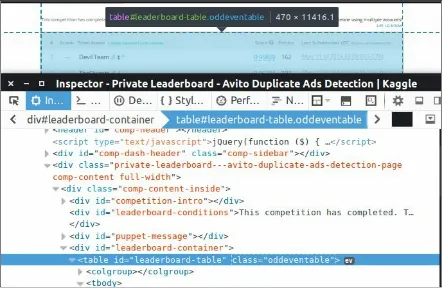Informasi Dokumen
- Penulis:
- Alexey Grigorev
- Sekolah: Packt Publishing
- Mata Pelajaran: Data Science
- Topik: Mastering Java for Data Science
- Tipe: book
- Tahun: 2017
- Kota: Birmingham
Ringkasan Dokumen
I. Data Science Using Java
This chapter introduces the fundamental concepts of data science and machine learning, emphasizing the importance of Java as a programming language in this domain. It outlines the CRISP-DM methodology, which serves as a framework for data science projects, detailing its stages such as business understanding, data understanding, data preparation, modeling, evaluation, and deployment. The chapter sets the stage for practical applications by presenting a running example of building a search engine, which will be referenced throughout the book. This foundation is crucial for students to grasp the systematic approach to data science, ensuring they understand how to effectively tackle real-world data problems using Java.
II. Data Processing Toolbox
In this section, the author explores the standard Java library and its capabilities for data processing. Key tools such as the Collections API, Input/Output API, and Streaming API are discussed, alongside extensions like Apache Commons and Google Guava. The chapter emphasizes the importance of data preparation, including reading from various data sources such as CSV, JSON, and databases. This toolbox is essential for students, as it provides them with the necessary skills to manipulate and prepare data for analysis, a critical step in any data science project.
III. Exploratory Data Analysis
This chapter focuses on exploratory data analysis (EDA) techniques in Java, highlighting the significance of EDA in understanding data before modeling. It covers basic statistical measures and visual inspection tools, using the search engine dataset as a case study. The emphasis on EDA is vital for students, as it encourages them to interact with data, uncover patterns, and gain insights that inform subsequent modeling efforts. The integration of libraries like Apache Commons Math and Joinery showcases practical tools for conducting EDA effectively.
IV. Supervised Learning - Classification and Regression
This section delves into supervised learning, covering classification and regression techniques using Java libraries such as Smile and JSAT. It explains key concepts like accuracy, precision, recall, and the importance of validation techniques like k-fold cross-validation. By applying these methods to real-world examples, such as predicting URL rankings and hardware performance, students gain hands-on experience in implementing supervised learning algorithms. This chapter is crucial for understanding how to build predictive models and evaluate their performance rigorously.
V. Unsupervised Learning - Clustering and Dimensionality Reduction
The chapter explores unsupervised learning techniques, particularly clustering and dimensionality reduction methods like PCA and DBSCAN. It emphasizes the application of these techniques in real-world scenarios, such as customer segmentation and feature extraction. By understanding these concepts, students learn how to identify patterns in unlabeled data and reduce complexity in datasets, which is essential for effective data analysis. This knowledge is foundational for advanced data science applications, making it indispensable for learners.
VI. Working with Text - Natural Language Processing and Information Retrieval
This chapter introduces natural language processing (NLP) and its applications in data science, particularly in the context of text data analysis. It covers libraries such as Apache Lucene and Stanford CoreNLP, demonstrating techniques for text classification, sentiment analysis, and information retrieval. By understanding how to process and analyze text data, students can leverage NLP to extract meaningful insights from unstructured data, which is increasingly important in today's data-driven world.
VII. Extreme Gradient Boosting
The author discusses the implementation of Extreme Gradient Boosting (XGBoost) in Java, focusing on its application in classification and regression problems. The chapter covers parameter tuning and feature importance, illustrating the effectiveness of XGBoost through practical examples. This section is particularly valuable for students, as it introduces them to advanced machine learning techniques that can significantly enhance model performance, preparing them for complex data science challenges.
VIII. Deep Learning with DeepLearning4J
This chapter provides an overview of deep learning concepts and the DeepLearning4J library, including the construction and training of neural networks. It discusses practical applications such as image recognition using Convolutional Neural Networks (CNNs) and the importance of data augmentation. By learning about deep learning, students are equipped with knowledge of cutting-edge techniques that are pivotal in modern data science, expanding their toolkit for tackling sophisticated problems.
IX. Scaling Data Science
In this section, the author examines big data tools like Apache Hadoop and Apache Spark, focusing on their application in processing large datasets. The chapter discusses the challenges of scaling data science solutions and provides insights into distributed data processing. This knowledge is critical for students, as it prepares them to work with big data technologies that are essential in the industry, ensuring they can handle the vast amounts of data generated today.
X. Deploying Data Science Models
The final chapter addresses the deployment of data science models, emphasizing the importance of integrating models into production environments. It covers microservices architecture, Spring Boot, and evaluation techniques like A/B testing and multi-armed bandits. Understanding deployment is crucial for students, as it bridges the gap between theoretical knowledge and practical application, ensuring they can deliver functional data science solutions in real-world scenarios.
Referensi Dokumen
- Online Evaluation for Information Retrieval ( K. Hoffman )
